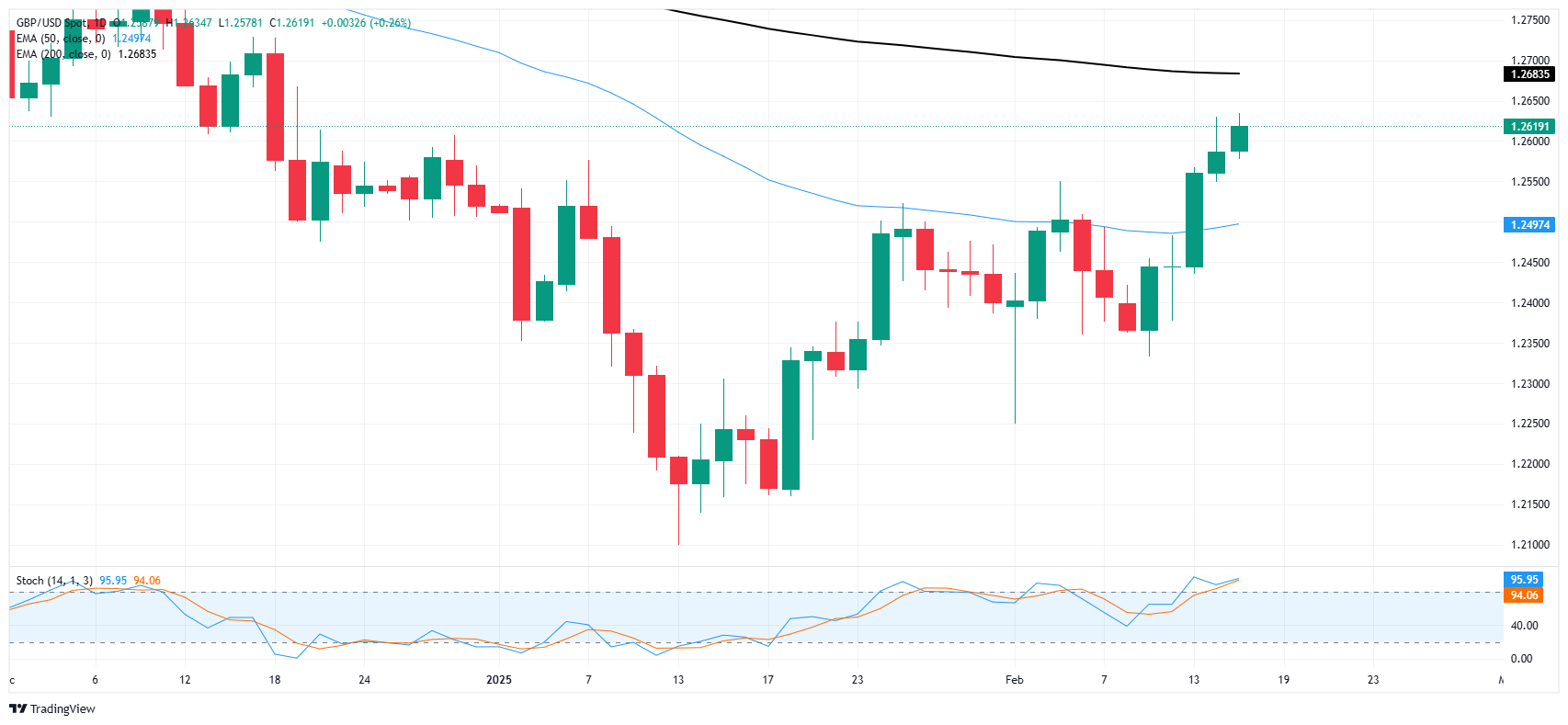GBP/USD rises ahead of UK earnings and employment data
- GBP/USD rose another 0.3% on Monday, chalking in a fifth straight gain.
- Global markets traded on a sedate note with US market dark for a holiday.
- Key UK wages and labor data in the barrel for Tuesday.
GBP/USD traded its way into an easy fifth straight gain on Monday, climbing nearly one-third of one percent and crossing back over the 1.2600 handle. Money market flows were constrained to kick off the new trading week with US market dark for the President’s Day holiday.
UK Average Earnings for the three months ended in December are expected to tick higher on an annualized basis on Tuesday. The headline figure for both with and without bonuses factored in is expected to print at 5.9%, compared to the previous print of 5.6%. The UK Claimant Count Change for January is also projected to swing higher to 10K net new unemployment benefits seekers over the month, compared to the previous 0.7K print. The ILO Unemployment Rate is also expected to rise to 4.5% from 4.4%.
The key US data print this week will be the upcoming Meeting Minutes from the Federal Reserve’s (Fed) latest rate call, due on Wednesday. US Purchasing Managers Index (PMI) survey results are also due this week, but not until Friday.
GBP/USD price forecast
GBP/USD staged another intraday gain on Monday, closing north of the 1.2600 handle for the first time mid-December. The pair is grinding its way steadily higher, but price action still remains capped just south of the 200-day Exponential Moving Average (EMA) near 1.2660.
Cable bidders have pushed the pair up from its last swing low into 1.2100 in January, and the current bull run has added 4.4% to GBP/USD. However, bullish sentiment is proving to be a fickle beast, and the latest upswing is still fresh out of a noisy congestion period that kept Cable bids battling around the 1.2400 handle.
GBP/USD daily chart
Pound Sterling FAQs
The Pound Sterling (GBP) is the oldest currency in the world (886 AD) and the official currency of the United Kingdom. It is the fourth most traded unit for foreign exchange (FX) in the world, accounting for 12% of all transactions, averaging $630 billion a day, according to 2022 data. Its key trading pairs are GBP/USD, also known as ‘Cable’, which accounts for 11% of FX, GBP/JPY, or the ‘Dragon’ as it is known by traders (3%), and EUR/GBP (2%). The Pound Sterling is issued by the Bank of England (BoE).
The single most important factor influencing the value of the Pound Sterling is monetary policy decided by the Bank of England. The BoE bases its decisions on whether it has achieved its primary goal of “price stability” – a steady inflation rate of around 2%. Its primary tool for achieving this is the adjustment of interest rates. When inflation is too high, the BoE will try to rein it in by raising interest rates, making it more expensive for people and businesses to access credit. This is generally positive for GBP, as higher interest rates make the UK a more attractive place for global investors to park their money. When inflation falls too low it is a sign economic growth is slowing. In this scenario, the BoE will consider lowering interest rates to cheapen credit so businesses will borrow more to invest in growth-generating projects.
Data releases gauge the health of the economy and can impact the value of the Pound Sterling. Indicators such as GDP, Manufacturing and Services PMIs, and employment can all influence the direction of the GBP. A strong economy is good for Sterling. Not only does it attract more foreign investment but it may encourage the BoE to put up interest rates, which will directly strengthen GBP. Otherwise, if economic data is weak, the Pound Sterling is likely to fall.
Another significant data release for the Pound Sterling is the Trade Balance. This indicator measures the difference between what a country earns from its exports and what it spends on imports over a given period. If a country produces highly sought-after exports, its currency will benefit purely from the extra demand created from foreign buyers seeking to purchase these goods. Therefore, a positive net Trade Balance strengthens a currency and vice versa for a negative balance.
